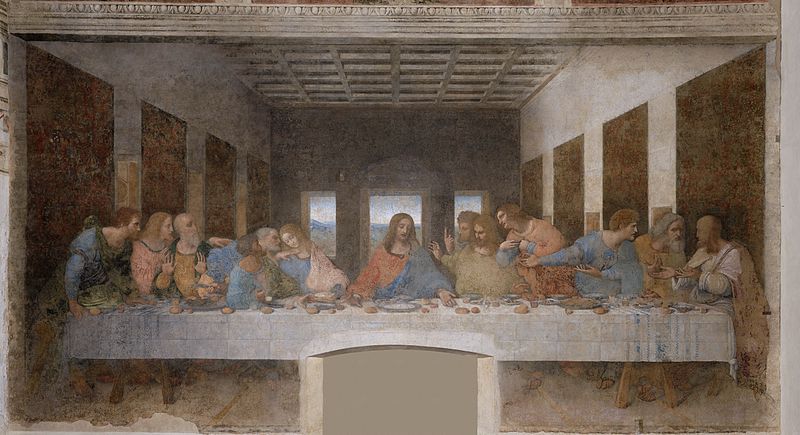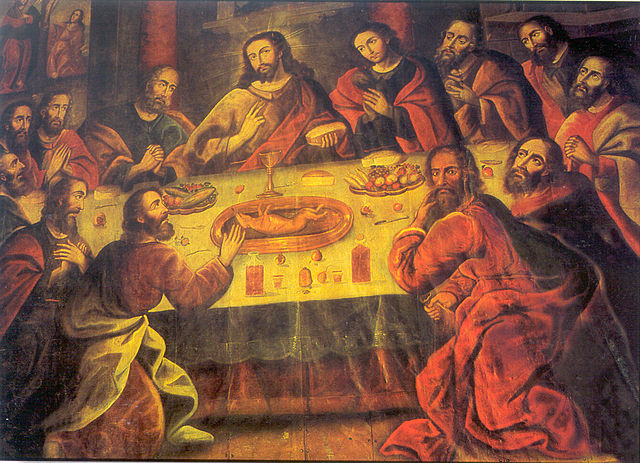Artists are often influenced by their own cultures. We can see this in the various ways that artists depict the same story, such as the biblical story of The Last Supper. The most famous The Last Supper painting was by Leonardo da Vinci, which you may be familiar with (shown below).

The Last Supper by Leonardo da Vinci (c. 1495)
Compare this with the Peruvian version of The Last Supper, painted by Marcos Zapata in 1753 (below).

The Last Supper by Marcos Zapata (1753)
The painting hangs in the Cuzco Cathedral. While the basic scene is similar to European paintings of the Last Supper, there are some very interesting differences.
-Rather than eating a traditional Passover meal of lamb, Jesus and the disciples appear to be enjoying a plate of cuy, shown in the center of the table. Cuy is guinea pig, a common meat dish enjoyed to this day in Peru. While that might seem strange to you (since many Americans keep guinea pigs as pets), this is perfectly normal in Peru, where they are easy to raise in small hutches in the same way that some families and farms in the United States raise rabbits for meat. The inclusion of the cuy in this painting is due to the difference in cuisine, but also is an example of symbolism: lamb was a sacrificial animal in the Judeo-Christian tradition, but cuy was a sacrificial animal in traditional Inca ceremonies. By using a symbol of sacrifice that was more meaningful to the Peruvian people, the artist makes a statement about the sacrifice in the story of Easter.
– The spread on the table shows that Jesus and the disciples are enjoying chicha, a Peruvian drink, and native fruits and vegetables such as potatoes, peppers, and corn.
-It is believed that the artist painted Judas, the disciple who betrayed Jesus (shown at the bottom of the painting, holding the money bag, dressed in red and looking out at the viewer), to bear a resemblance to Francisco Pizarro, the Spanish conquistador responsible for the fall of the Inca empire!


